Instruction
Push or Pull: What’s your power source when putting?
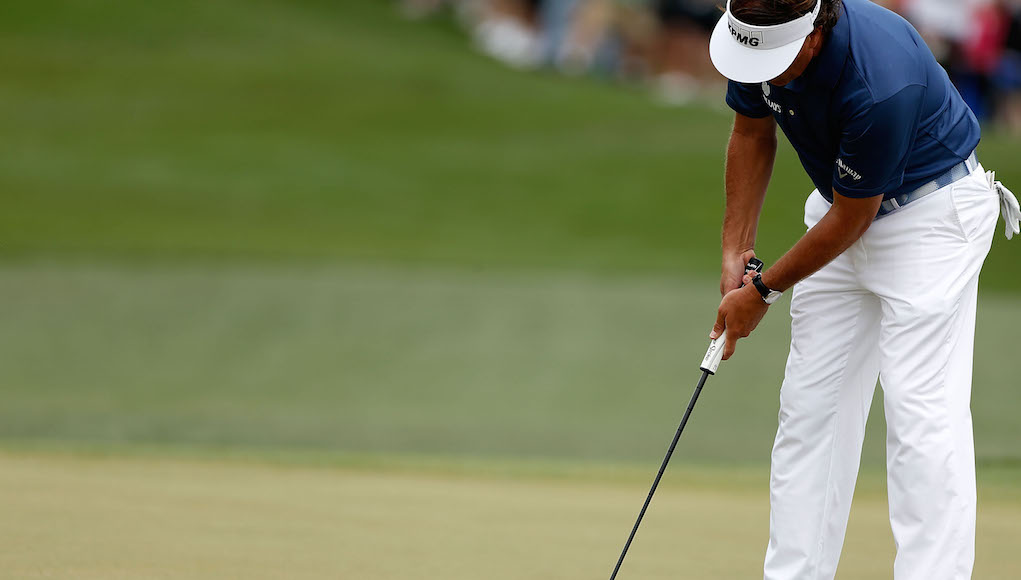
A big mistake that many amateurs, and even some professionals make when putting is to use their hands to deliver the putter to the ball. These types of players have made it a habit to use hand action to power the putter, which causes very mixed results on today’s faster green surfaces.
Your lead hand controls the face angle at impact; thus, if your lead hand is breaking down or bending, you will never be able to control the direction of the ball as it leaves the blade. To illustrate this point, take your putter and stroke putts with your lead hand only using a slapping, wrist-bending type of motion and you will notice that the initial starting direction of your putts will be scattered. Consequently, if you do the same thing with a firm left hand, your putts will begin more consistently in the direction you’re aiming.
Your rear hand controls the dynamic loft of the blade at impact. Therefore, if your rear hand moves from a bent condition at address into a flat or even arched condition post impact, then you will find that you will increase the loft of the putter. Whenever this happens, it affects the way the ball leaves the blade and tends to create excessive backspin, which actually launches the ball into the air. Obviously, if you add loft to your putter, you will have issues with your speed control. Try hitting putts with your rear hand only, and do not let the angle between your hand and your forearm change. This will keep the loft from changing relative to the setup position. If that angle does change, however, you’ll see how the loft changes, thus adding inconsistencies to your speed.
Our main line of defense to strengthen our consistency on the greens is to improve the quality of our impact alignments and to learn how to power the stroke in the best way for each individual. The best way to check to see if you have quality impact alignments and a sound putting stroke is to look at the hands when they stop moving during the follow through, and check the conditions of your wrists. If the lead wrist is bent and the rear wrist is flat with the club head passing your hands, then you have too much hand action during the putting stroke.
Now, let’s identify which type of putting stroke you tend to have: a push or a pull.
My keys to building a better stroke
Are you a lead-arm puller or a rear-arm pusher? If you don’t know, you will always have trouble controlling your impact alignments during the putting stroke.
If you’re a lead-arm puller then you tend to enjoy faster greens, have a long and flowing putting stroke, better speed control, and better impact alignments. If you’re a rear-arm pusher then you will be better on slower greens and have a more aggressive putting stroke. Most of your problems will come from speed control due to faulty impact alignments.
How do these two sources of power work to create better alignments?
Lead-Arm Puller
The first type of power source comes from the angle formed between the lead upper arm and the lead shoulder during the backstroke. As this angle moves from an acute condition to an obtuse condition during the downstroke, it is deemed a lead arm pull stroke. The pulling action is a result of using this type of power source and is mostly felt in the back of the lead hand.
When you use this type of stroke — usually reserved for faster greens — your rear hand will remain bent and will always react and be pulled through the stoke by the motions of the lead arm. When using this type of stroke, you will find that a slower tempo is the key — long and flowing putting strokes are usually a result of this type of putting power source.
Players such as Ben Crenshaw, Phil Mickelson (from the left-handed side) and John Daly exemplify this type of stroke pattern. The only problem with using this type of power accumulation during a putting stroke is that if the greens start to slow down, most players have a hard time advancing the ball to the hole.
Rear-Arm Pusher
The second type of power accumulation involves moving the rear arm from a bent condition into a straightening condition through the impact zone with a bent rear wrist: the rear arm push stroke. The rear arm is never fully straight during impact, but it is straightening and is only fully straight long after the ball is gone. When the rear arm starts to straighten, with a mandatory bent rear wrist through impact, it powers the putter shaft and transports energy to the ball preserving the effective loft of the putter head. Anytime you keep the rear wrist bent through the ball using the rear arm push stroke, the loft of the putter becomes more consistent through the ball and your speed control will be better.
This type of putting power source is best used when you have a tendency to “slap at the ball” with your rear hand, or for people who tend to have poor speed control. More aggressive putters who putt with less break tend to use this type of stroke for a stronger feel through the ball. Players using this type of motion on Tour include Brandt Snedeker and Nick Price.
What to Do
When golfers are putting well, the stroke and its power seems to flow from both sources (push and pull) simultaneously, and the feels that are derived from this action seem to be very simple in nature; there is little need to focus on the individual sources of power. If you are having trouble with speed control, impact alignments, or fast greens, however, then try one of these two putting styles and you may see better success on the greens.
I usually try to keep my students thinking about as little as possible during the actual stroke, but on the putting green I try to get them to focus on the proper motions that each individual body part must make. This education of the hands and body will allow you to better understand your total motion, as well as the individual pieces.
The key to putting consistency is to understand what your impact alignments do in your stroke and how these alignments are transported based on these two power sources. Take the time to understand these alignments and use the drills listed above to see if you are a rear-arm pusher or a lead-arm puller on the greens. Then practice accordingly.
- LIKE148
- LEGIT18
- WOW6
- LOL5
- IDHT7
- FLOP9
- OB5
- SHANK25
Instruction
Clement: Stop ripping off your swing with this drill!

Not the dreaded headcover under the armpit drill! As if your body is defective and can’t function by itself! Have you seen how incredible the human machine is with all the incredible feats of agility all kinds of athletes are accomplishing? You think your body is so defective (the good Lord is laughing his head off at you) that it needs a headcover tucked under the armpit so you can swing like T-Rex?
- LIKE0
- LEGIT1
- WOW2
- LOL0
- IDHT0
- FLOP0
- OB0
- SHANK2
Instruction
How a towel can fix your golf swing

This is a classic drill that has been used for decades. However, the world of marketed training aids has grown so much during that time that this simple practice has been virtually forgotten. Because why teach people how to play golf using everyday items when you can create and sell a product that reinforces the same thing? Nevertheless, I am here to give you helpful advice without running to the nearest Edwin Watts or adding something to your Amazon cart.
For the “scoring clubs,” having a solid connection between the arms and body during the swing, especially through impact, is paramount to creating long-lasting consistency. And keeping that connection throughout the swing helps rotate the shoulders more to generate more power to help you hit it farther. So, how does this drill work, and what will your game benefit from it? Well, let’s get into it.
Setup
You can use this for basic chip shots up to complete swings. I use this with every club in my bag, up to a 9 or 8-iron. It’s natural to create incrementally more separation between the arms and body as you progress up the set. So doing this with a high iron or a wood is not recommended.
While you set up to hit a ball, simply tuck the towel underneath both armpits. The length of the towel will determine how tight it will be across your chest but don’t make it so loose that it gets in the way of your vision. After both sides are tucked, make some focused swings, keeping both arms firmly connected to the body during the backswing and follow through. (Note: It’s normal to lose connection on your lead arm during your finishing pose.) When you’re ready, put a ball in the way of those swings and get to work.

Get a Better Shoulder Turn
Many of us struggle to have proper shoulder rotation in our golf swing, especially during long layoffs. Making a swing that is all arms and no shoulders is a surefire way to have less control with wedges and less distance with full swings. Notice how I can get in a similar-looking position in both 60° wedge photos. However, one is weak and uncontrollable, while the other is strong and connected. One allows me to use my larger muscles to create my swing, and one doesn’t. The follow-through is another critical point where having a good connection, as well as solid shoulder rotation, is a must. This drill is great for those who tend to have a “chicken wing” form in their lead arm, which happens when it becomes separated from the body through impact.
In full swings, getting your shoulders to rotate in your golf swing is a great way to reinforce proper weight distribution. If your swing is all arms, it’s much harder to get your weight to naturally shift to the inside part of your trail foot in the backswing. Sure, you could make the mistake of “sliding” to get weight on your back foot, but that doesn’t fix the issue. You must turn into your trial leg to generate power. Additionally, look at the difference in separation between my hands and my head in the 8-iron examples. The green picture has more separation and has my hands lower. This will help me lessen my angle of attack and make it easier to hit the inside part of the golf ball, rather than the over-the-top move that the other picture produces.


Stay Better Connected in the Backswing
When you don’t keep everything in your upper body working as one, getting to a good spot at the top of your swing is very hard to do. It would take impeccable timing along with great hand-eye coordination to hit quality shots with any sort of regularity if the arms are working separately from the body.
Notice in the red pictures of both my 60-degree wedge and 8-iron how high my hands are and the fact you can clearly see my shoulder through the gap in my arms. That has happened because the right arm, just above my elbow, has become totally disconnected from my body. That separation causes me to lift my hands as well as lose some of the extension in my left arm. This has been corrected in the green pictures by using this drill to reinforce that connection. It will also make you focus on keeping the lead arm close to your body as well. Because the moment either one loses that relationship, the towel falls.


Conclusion
I have been diligent this year in finding a few drills that target some of the issues that plague my golf game; either by simply forgetting fundamental things or by coming to terms with the faults that have bitten me my whole career. I have found that having a few drills to fall back on to reinforce certain feelings helps me find my game a little easier, and the “towel drill” is most definitely one of them.
- LIKE11
- LEGIT1
- WOW2
- LOL0
- IDHT0
- FLOP2
- OB0
- SHANK8
Instruction
Clement: Why your practice swing never sucks
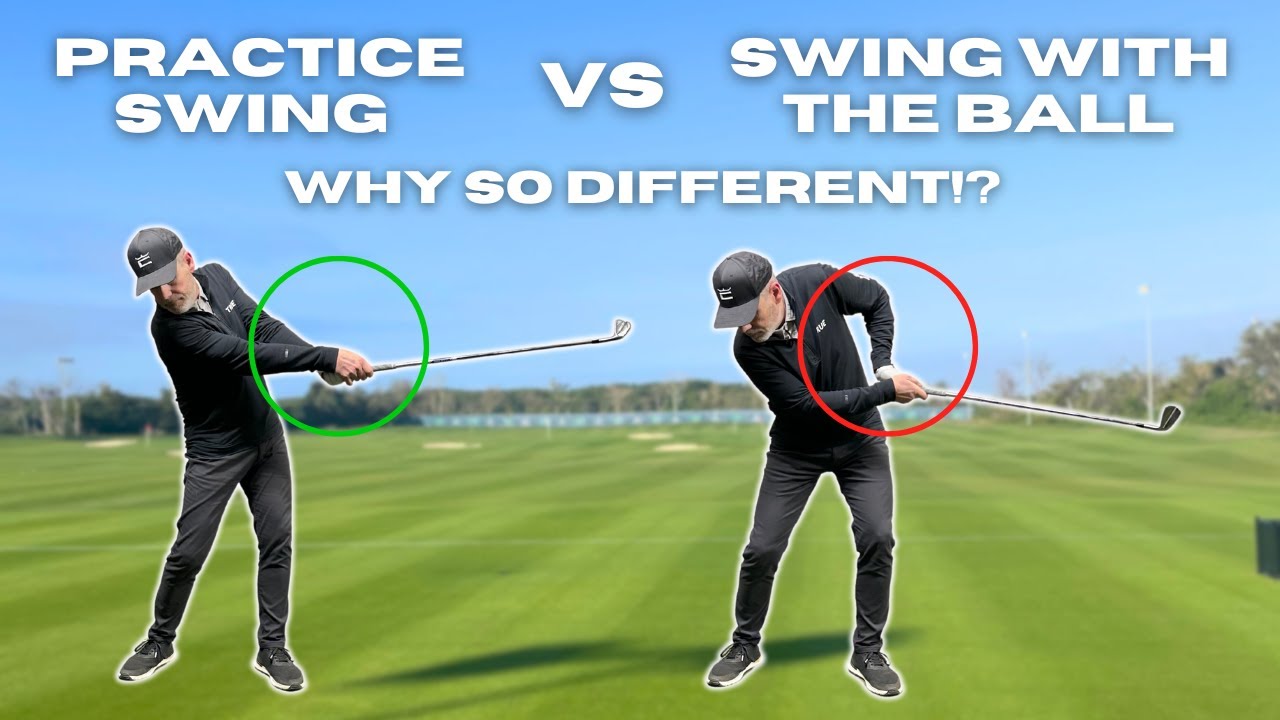
You hear that one all the time; I wish I could put my practice swing on the ball! We explain the huge importance of what to focus on to allow the ball to be perfectly in the way of your practice swing. Enjoy!
- LIKE0
- LEGIT0
- WOW0
- LOL0
- IDHT0
- FLOP0
- OB0
- SHANK2
-
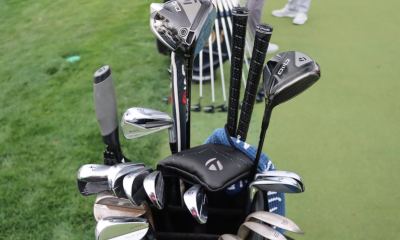
 Whats in the Bag2 weeks ago
Whats in the Bag2 weeks agoScottie Scheffler WITB 2024 (March)
-
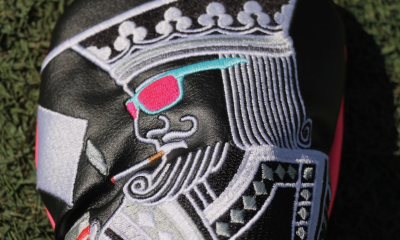
 Tour Photo Galleries2 weeks ago
Tour Photo Galleries2 weeks agoPhotos from the 2024 Arnold Palmer Invitational
-
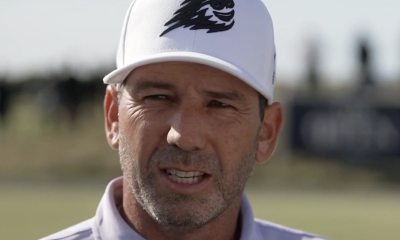
 19th Hole3 weeks ago
19th Hole3 weeks agoThe total sum that Sergio Garcia needs to pay in fines if he wants to return to DP World Tour revealed
-

 19th Hole2 weeks ago
19th Hole2 weeks agoJoaquin Niemann names 3 PGA Tour events he’d love to play each year ‘in a perfect world’
-

 19th Hole2 weeks ago
19th Hole2 weeks ago‘Seems suspect’ – PGA Tour pro hits out at decision to hand Adam Scott and Webb Simpson Bay Hill sponsor exemptions
-
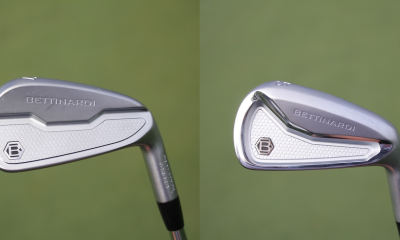
 Equipment2 weeks ago
Equipment2 weeks agoSpotted: Bettinardi irons at the Arnold Palmer Invitational
-

 19th Hole2 weeks ago
19th Hole2 weeks agoPaulina Gretzky opens up on receiving death threats following DJ’s move to LIV Golf
-

 19th Hole2 weeks ago
19th Hole2 weeks agoVincenzi’s 2024 Arnold Palmer Invitational betting preview: Big names ready to pounce at Bay Hill















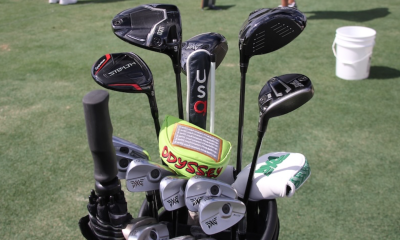

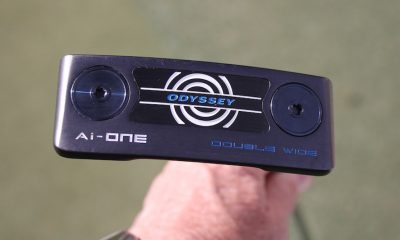

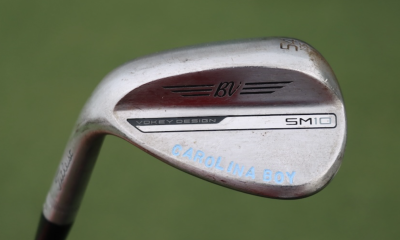

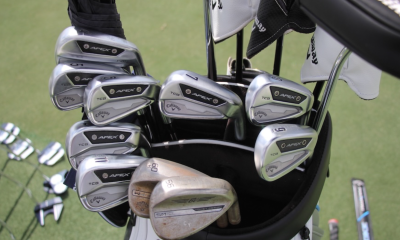

Dave
Jul 14, 2016 at 12:31 am
I’ve got the yips any suggestions besides stop golfing. It’s gotten so bad I don’t even know what direction the ball is even going. Oh ya I put left handed and have tried right hand low the claw the hook and every other thing you could imagine. Help
cr
Jul 9, 2016 at 4:33 pm
I tend to tug and heave
Stretch
Jul 8, 2016 at 8:18 pm
Pullers or throwers can both be great putters. Didn’t see throw throw and push push as options or my favorite pull pull. No matter if the wrist angles are maintained and the shaft planes the start line with the face square a lot of good happens on the greens.
Muscle memory
Jul 8, 2016 at 3:59 pm
Before this, shouldnt a person get properly fit for a putter? ..See a trained certified fitter who actually can explain the physics, get hooked up to a SAM Putt Lab machine, see your stroke tendencies, get the right putter to compliment your natural stroke.. then this?
cr
Jul 9, 2016 at 4:32 pm
No.
Justin
Jul 8, 2016 at 1:54 pm
This is a very good article that most people will ignore because they think they’ve got it all figured out. If you take the time to figure out what each hand is doing, it’ll be much easier to make them work together.
You don’t need a putting green to practice simple drills like this and become better. The real reason people do not practice putting with drills is not because they don’t have the time or the location, it’s because drills are not fun. Shooting lower scores is fun and you’ve got to do some boring stuff to get to that point. The same could be said in business or virtually any other stage of life. The people who put in the time reap the rewards. Mediocrity is a powerful thing.
Don OConnor
Jul 8, 2016 at 9:51 am
Evidently most of the comments made here are from people who have never practiced putting using one arm. This is a drill Stan Utley highly recommends and he asks new students in beginning which arm dominates their putting stroke. The reason most golfers don’t improve is because they think they know more than the highly successful teaching pros. Keep up the good work, Tom. There are golfers out here that actually want improve and appreciate your articles.
IHateGolfIsAwesome
Jul 9, 2016 at 11:11 am
Thanks for the plethora of comments on these articles.
larrybud
Jul 8, 2016 at 9:41 am
“Your lead hand controls the face angle at impact”
“Your rear hand controls the dynamic loft of the blade at impact”
Please tell me how you move one hand without moving the other at the same time, when both are gripping the club. lol.
cr
Jul 9, 2016 at 4:33 pm
exactly.
sukdeek
Jul 8, 2016 at 1:42 am
I prefer to pop hit it like Sneds and like they used to in the old days with a flick of the wrist
Christen_the_sloop
Jul 7, 2016 at 9:50 pm
I wouldn’t want to associate either the words ‘push’ or ‘pull’ with my putting stroke. What a terrible thought. Gag reflex induced.
juststeve
Jul 7, 2016 at 12:40 pm
My power source with the putter, as it is with all the other clubs, is the swinging motion of the club, which is neither a pull or a push.
Justagolfer
Jul 8, 2016 at 6:36 pm
Tell me how you get swinging motion into the club? If I don’t use muscle to move the putter, my putter is not in a swinging motion. I’m confused.
steve
Jul 7, 2016 at 12:23 pm
Same could be said for the full swing. Do you feel like your pulling through on the downswing or pushing through. For me it is pushing, when I feel like the front side is pulling through it feels like I’m fighting a hook.